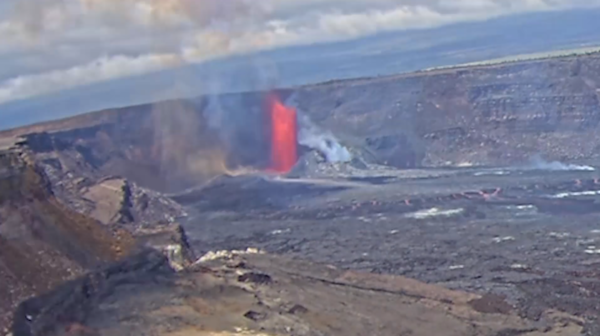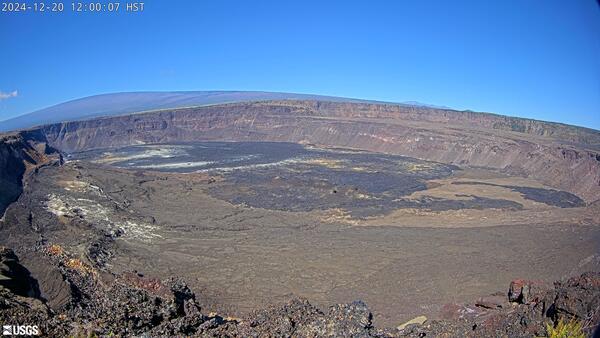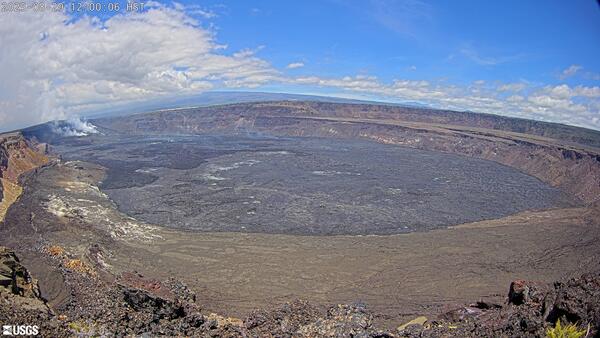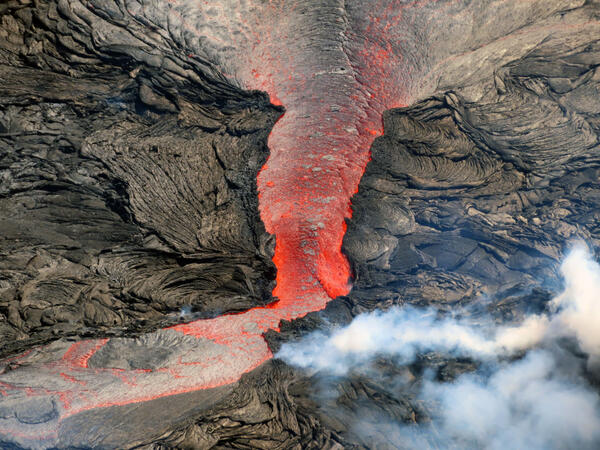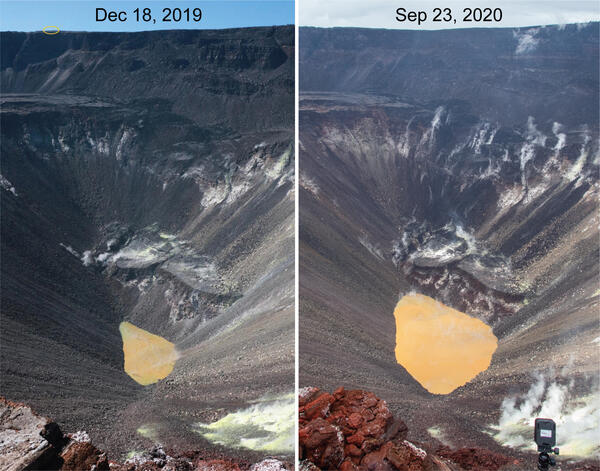Timelapse video showing changes in the Kīlauea summit eruptive vents as a result of episodic lava fountaining since December 23, 2024
Timelapse video showing changes in the Kīlauea summit eruptive vents as a result of episodic lava fountaining since December 23, 2024This timelapse video shows changes to the eruptive vent structure in Kaluapele (Kīlauea's summit caldera) due to repeated episodic lava fountaining that began on December 23, 2024. The images were taken by the B1cam, which is located on the east rim of Kaluapele, and they have been cropped from their original versions. USGS video.


